Where Can You Park a Tiny Home: My Wins, Fails, and Hard-Learned Lessons on Finding Legal Spots
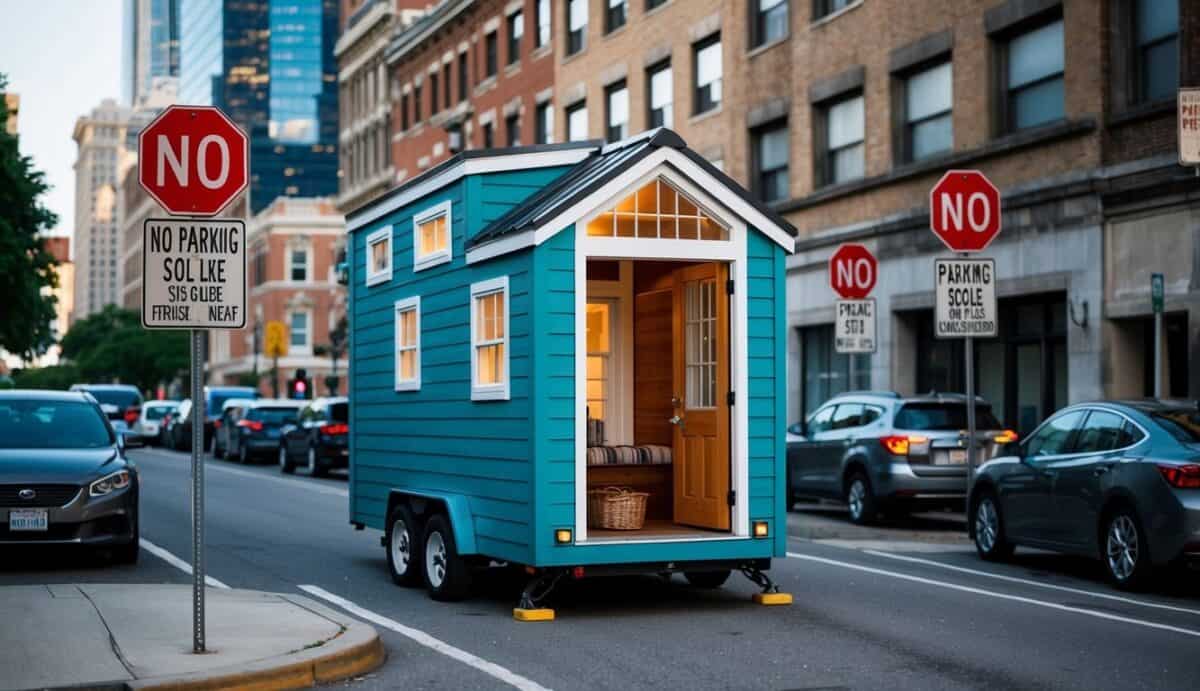
My First Tiny Home Parking Spot: Hard Lessons Learned
Remember that rush we felt? Heart pounding. Keys in hand. We’d finally found our first spot to park the tiny home—an old gravel patch behind a retired mechanic’s barn. It felt like winning the lottery. Well, at first.
Things looked fine on day one. The landowner seemed nice. Cheap rent, no nosy neighbors. But let’s be real here. There were red flags we ignored in our excitement:
| What We Noticed | What Actually Happened |
|---|---|
| Quiet location | Too quiet—sketchy at night |
| “Plenty of space,” said the guy | Barely fit our truck and tiny house |
| “You can stay as long as you need” offer | Evicted after 2 months—zoning crackdown |
We learned real fast—just because you can park somewhere doesn’t mean you should. Turns out, local zoning laws don’t care how nice your deck looks. We felt the pressure, always glancing over our shoulder. We didn’t make friends with neighbors. We barely saw anyone. And that “cheap” rent? It cost us peace of mind.
Here’s what we’d do differently:
- Ask real questions: Who owns the land? What’s the law here?
- Check zoning before signing anything. Parks and cities can have strict rules about where you can actually park tiny homes.
- Look for community: Isolation wears us down. We need friendly faces nearby, not just empty fields and stray dogs.
If you’re parking your first tiny home, I’ll be honest—don’t rush it. We’re after freedom, not just a place to hide.
The Big Picture: Where Can You Legally Park A Tiny Home?
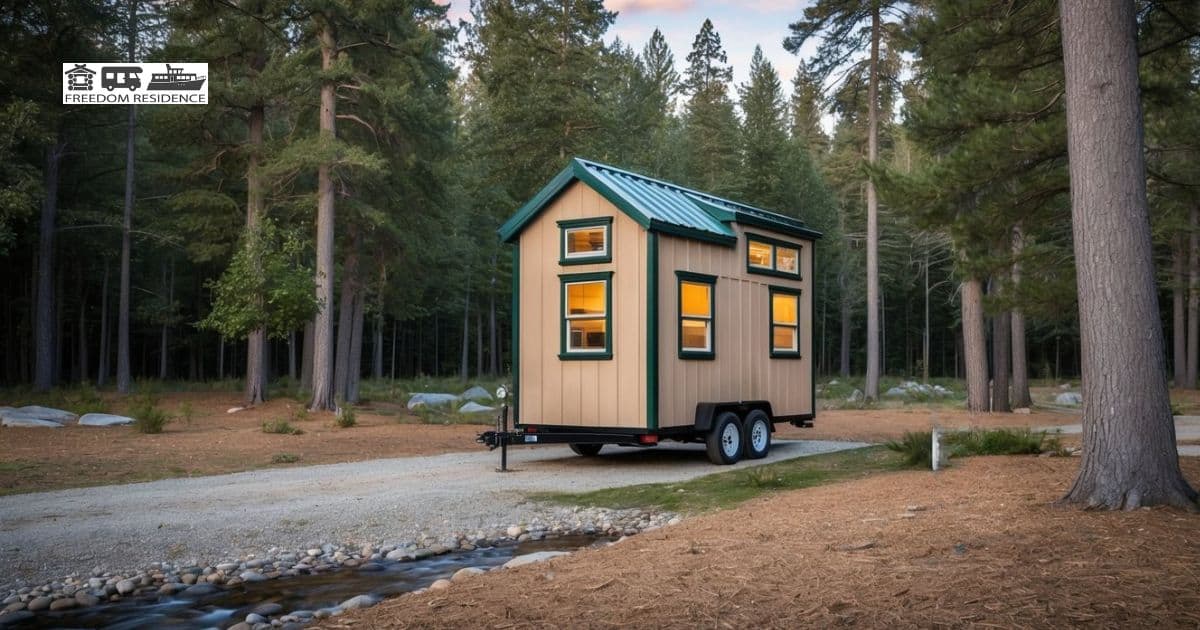
I’ll never forget the night we parked our first tiny home on a patch of family land, thinking we’d found freedom—only to get a knock from local code enforcement two days later. We learned real quick: where we park isn’t just about wide-open fields and pretty views. There’s a maze of rules, codes, and county quirks. If we want to keep our home (and sanity), we need to face them head on.
Zoning Laws: The Ultimate Gatekeepers
If you’ve ever tried to park a tiny house somewhere new, you know how fast dreams crash into zoning laws. Most places split land into “zones”—residential, agricultural, commercial, and a bunch of other categories that sound boring but matter a ton to us.
Let’s say we’ve got a buddy with farmland out in the county. Even out there, the law might say “no permanent structures under 600 square feet.” That means our perfectly built 200-square-foot tiny home? Still illegal.
In cities or subdivisions, rules get even stiffer. In some towns, you can only park a tiny house in special tiny home communities or maybe in an RV park if your rig meets certain standards. Some rural counties are more open—like parts of Iosco County, Michigan, where towns like East Tawas and Oscoda Township allow tiny homes if you play by the local rules. That’s why we always call the local zoning office before we move our home—whether it’s on wheels or a foundation.
Building Codes That’ll Trip You Up
Building codes are sneaky. We think we’re in the clear because we found land zoned for residential use, but then the building inspector shows up and wants a fire escape in our loft, two exits, or a shower size that just won’t fit.
If our home is on wheels, things can get trickier. Some counties treat it like an RV. Want to pass inspection? Sometimes you need the home to be RVIA certified—basically built like an RV and meeting tough national standards. If not, neighbors (or the county) might say our tiny home is an illegal trailer.
Homes on foundations have to pass even more rules—minimum room sizes, ceiling heights, hookups for water and sewer. There were nights we tore our hair out over a missing handrail or a window that was an inch too small. Trust me: study your local codes before you build or roll in, or you’ll be fixing things after you move.
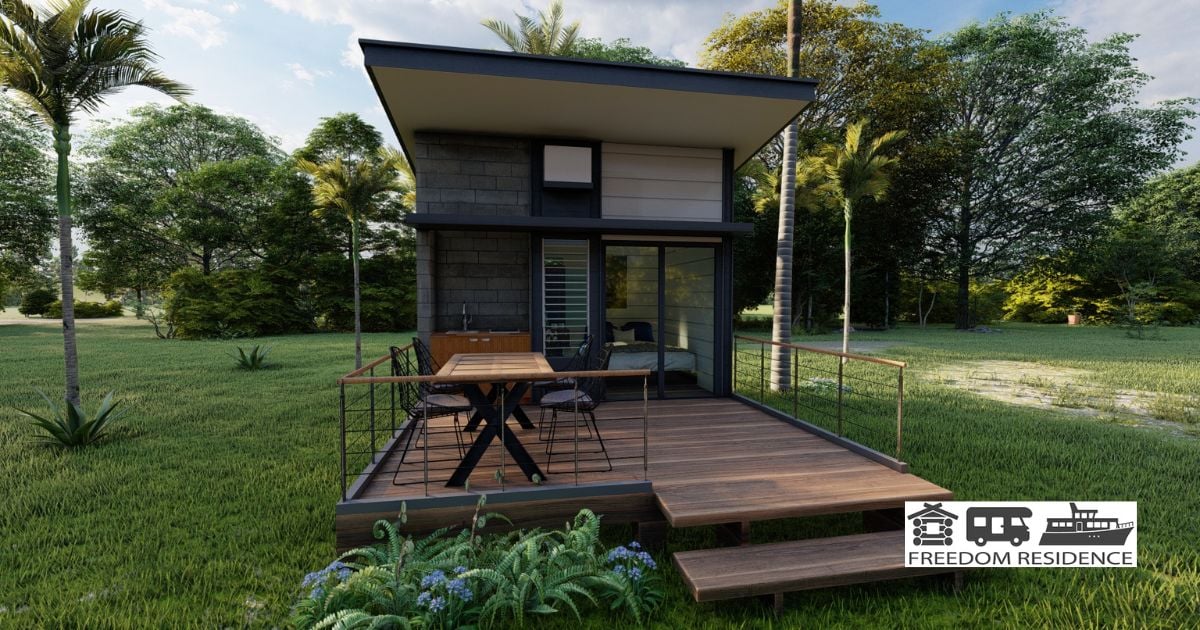
State And County Variations
Here’s the kicker—rules change everywhere. What’s legal in one county might get you fined or evicted in the next. Even in Michigan, some towns are welcoming and others will march you off the moment they spot your “unsanctioned structure.” It all comes down to the local officials, the county board, maybe even the town’s mood that day.
Some places are experimenting with tiny house ordinances, especially in the Midwest and the Northwest. Other regions simply stick to big-house rules and hope you go away. Don’t trust “Internet legends” about loopholes—we nearly lost our home listening to advice from a random forum.
If we’re serious about tiny living, we need to get a clear answer from the people who make the decisions (hard as it is to pin them down). Never hurts to visit the zoning office in person, meet the folks behind the desk, and get the real story—sometimes you’ll find an ally who loves what we’re doing. Most times, it’s just us and the rulebook. Either way, knowledge really is freedom.
Living Tiny On Wheels: The RV Park Adventure
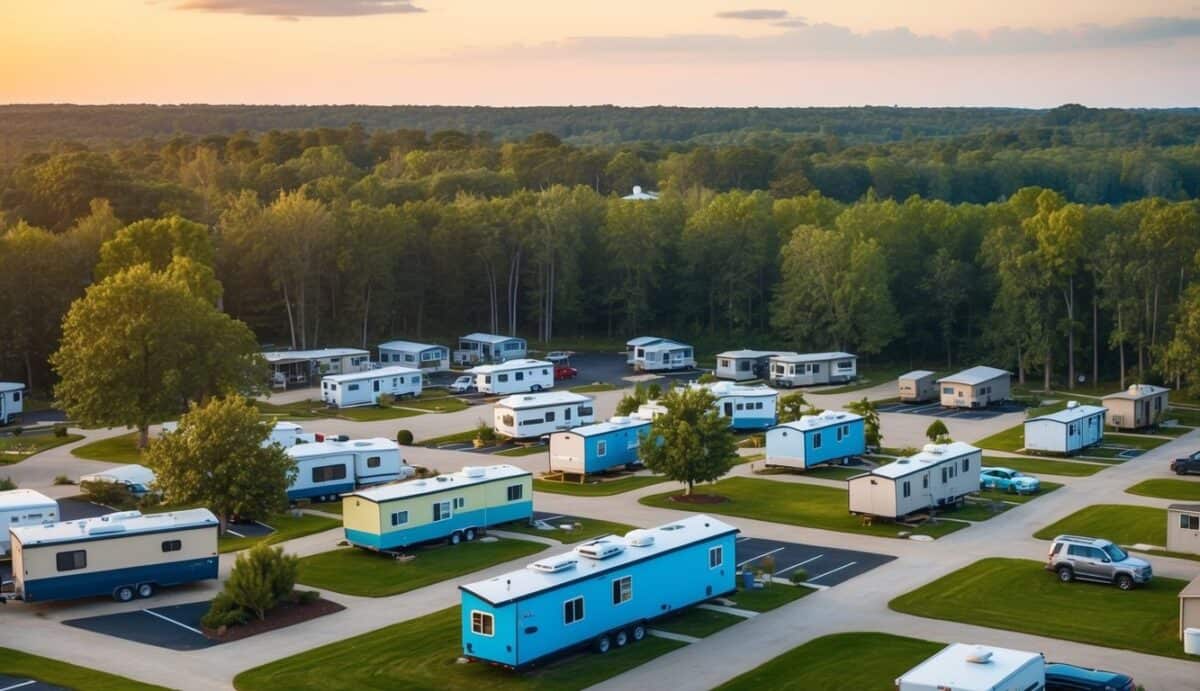
Picture us, standing in front of our tiny home on wheels, early morning air cool on our cheeks, boot prints pressed into soft gravel. The RV park is waking up—coffee brewing, neighbors waving hello.
We’ve traded mortgage payments for a rolling front door view that changes whenever we want. But parking a tiny house in an RV park? That’s a different ball game than pulling in with a motorhome. Takes research, a bit of nerve, and knowing what matters most.
We’ve found that not every RV park welcomes tiny homes. Some feel like little outposts of freedom; others have strict rules and invisible fences. Long-term stays come with their own surprises, and the “extras” they offer can make—or break—the whole adventure.
Finding Tiny Home-Friendly RV Parks
Let’s be real—finding an RV park that takes tiny homes isn’t always a walk in the park. We learned pretty quick that fancy brochures and websites rarely tell the full story. Some places love the idea of tiny living, others slam the door shut if your wheels look different from theirs.
Here’s what worked for us:
- Call ahead. Don’t just show up. Some RV parks have rules against non-RV trailers or homes on wheels over a certain size.
- Look for parks that list “tiny homes” specifically. You can find some honest-to-goodness communities where tiny homes are not just allowed, they’re celebrated. There are even guides and lists online that round up the best options.
- Read the fine print. Some parks allow tiny home parking but require you to meet RVIA certification or specific hookups.
- Check location laws. Cities like Portland, Austin, and Durango have legal places for tiny homes. Always double-check zoning. We’ve been burned by a “sure thing” before, so trust me—ask.
It can feel awkward making those first calls. I sweated through plenty of phone calls with managers who sounded half curious, half suspicious. But, in the end, we found surprises—hidden gems that welcomed us because we asked honest questions and showed respect for their space.
Long-Term Stays Versus Overnight
A one-night stop is one thing. But what if we want to settle in, hang bird feeders, or finally build that little porch? RV parks divide into two big camps—overnight pit stops and spots designed for long-term living.
For short stays, rules tend to be looser. They expect travelers—folks just passing through. We pulled in late, slept hard, and rolled out with no one batting an eye. But the “home” part of tiny home living? That’s trickier.
Long-term spots are often more selective. Some require background checks. We’ve seen monthly leases, pet policies, even age restrictions. Spaces might cost more, but you get a “neighborhood” feel. One Texas park offered laundry, mail service, and Friday night barbeques (never turn down free brisket, by the way).
Questions to ask:
- What is the minimum/maximum stay allowed?
- Are there extra costs for longer parking?
- Can we have packages delivered?
- Will we get the boot if we do yardwork or plant tomatoes?
We’ve accidentally signed up for short-term fun only to get those “you gotta go” looks after a week. Do your homework before unhooking your trailer.
Amenities, Community, And The Realities
Let’s clear something up—RV park life isn’t all sunsets and campfires. But there are perks we didn’t expect.
Common amenities:
| Amenity | Pros | Cons |
|---|---|---|
| Full hookups | Consistent power/water | Sometimes high fees |
| Laundry | Convenient | Crowded on weekends |
| WiFi | Easy to work remotely | Spotty signal, unreliable |
| Rec areas | Social connection | Can be noisy |
Living alongside folks in everything from vintage campers to school buses, we found a weird sense of camaraderie. Swapping stories, trading tools, leaning on each other when the weather turned sour.
But there’s no hiding—people notice if you keep to yourself. Some neighbors become fast friends; others, well, you keep your distance. RV parks can get noisy—kids playing, engines coughing, generators running all night.
We learned to roll with the punches. Once, a batch of rowdy campers set up shop next door and turned the place into party central. We had to decide: join the fun or politely ask for a quieter lot. Turns out, “community” also means learning how to share space—and, sometimes, how to keep your boundaries.
The best reality check? Tiny living is about trade-offs. If we want a real shower, laundry on site, or a place to shoot the breeze, we put up with less privacy and more rules. But the sunsets, the freedom, and that first cup of coffee on a misty morning—those moments make it all worthwhile.
Private Land: Freedom—With Asterisks
There’s a certain thrill in knowing we can carve out our own space on a chunk of earth—our terms, our rules. But ask anyone who’s tried to park a tiny home on private land, and you’ll hear tales of hoops, heartburn, and some pretty wild lessons learned the hard way.
Parking On Your Own Property
Let’s get honest: just because we own the land doesn’t mean we can do whatever we want with it. We found that local zoning rules and building codes can trip us up fast. Things like minimum house size, septic requirements, and “permanent foundation” rules pop up everywhere and change from county to county.
Most places still see tiny homes as rebels, not residents. We’ve had to call the county office, sometimes more than a few times, just to get a straight answer. Chances are, we’ll need permits or inspections—even if the house is on wheels.
If you want to play it by the book, check if your land is zoned for RVs or accessory dwellings. It’s often easier to park in areas with “agricultural” or “rural residential” zoning. Otherwise, be ready to negotiate, fly under the radar, or get creative with workarounds. For more details on the legal maze, check out this guide for parking a tiny home on wheels in California.
Convincing Friends And Family
Not all of us start with our own land. Sometimes we lean on friends or family—maybe park in their backyard or pasture for a while. We’ve done it, and let me tell you, it can be a wild ride.
First, it sounds like the dream: free rent, backyard BBQs, a built-in support network. But we found out pretty quickly that even the kindest uncle can worry about noise, nosy neighbors, or local rules. Relationships can get strained when the county gets involved or if your setup starts to look more permanent.
It helps to be up front about expectations. Here’s what worked for us: Write down a simple agreement (yes, in writing), set ground rules—how long we’ll stay, what we’ll pay or fix in exchange, and who handles what if an inspector shows up. Trust me, it prevents awkward Thanksgiving dinners.
Unexpected Pitfalls Of Rural Living
We thought heading to the country would solve everything: no nosey neighbors, no city rules, just peace and quiet. But, man—rural living slaps you with surprises. First, there’s the whole utilities thing. No city water? We had to dig a well or haul water in barrels.
No sewer? Get ready for composting toilets, or shell out for a septic tank (which can get pricey and needs permits).
Even parking can get tricky. Soft ground turns to swamp in spring. Guess who got stuck up to their axles after a rainstorm? Yep, that was us. Internet might be slow, shops are far, and you’ll learn to stock up on groceries. Oh, and watch out for wildlife—we once lost a wheel cover to a curious raccoon.
We’d do it again, but with more prep. Rural land gives us freedom, but it’s the kind you earn—one headache and one lesson at a time. If you’re curious what works for other folks, check out these tips on where to park your tiny house.
Backyard Parking: ADUs, Guest Houses, And Loopholes
Backyard parking can look easy on paper, but our experiences tell us it’s more like a hidden obstacle course. From loopholes to surprising community pushback, we’ll need to get creative—and maybe a little bold—if we want to make it work without headaches or heartbreak.
Accessory Dwelling Unit Opportunities
If someone had told us a few years back that Accessory Dwelling Units (ADUs) could be our golden ticket, we would’ve thought they were talking in riddles. But here’s the simple truth: in a lot of cities, local laws are slowly but surely opening doors for tiny homes as legal guest houses or ADUs.
What’s wild is how the rules can change block by block. In some spots, we can set up a tiny home in the backyard as an ADU—as long as we meet size limits and hook up to city utilities. Sometimes that means inspections, fees, and paperwork that can really wreck your vibe. But in states like California and Oregon, there’s been a real push recently to make ADU laws more friendly.
It’s not always fast or easy, but if we’re willing to fight city hall (and fill out a few forms), there’s a real shot at getting legal, worry-free backyard parking.
I’ve heard stories of folks turning dusty old RV pads into cozy backyard retreats—and, honestly, I wish I’d known about that before sweating it through sketchier options.
Navigating HOAs And NIMBYs
We can build the world’s coziest tiny home, but if we land in the wrong neighborhood, it can feel like swimming upstream with weights on our ankles. HOAs are the gatekeepers—oftentimes strict, occasionally unpredictable, and always worth checking on before we even roll up. One wrong move and we’re dealing with fines or awkward neighbor stares that sting a little more than we want to admit.
Not all resistance comes from rulebooks. Sometimes it’s just good old fashioned NIMBYs (Not In My Backyard types) worried that our little slice of freedom will tank their property values. We’ve seen folks get creative—hiding a tiny home behind fences, calling it a “guest suite,” or quietly living as “extended guests” to skirt formal rules.
There’s a bit of wild west spirit in looking for loopholes folks have tested—but I’ll be honest, it’s not for the faint of heart. If we’re sneaking under the radar, it pays to lay low and build good relationships with our neighbors. Sometimes a plate of cookies and a wave can save us years of drama.
Utilities, Sewage, And City Politics
Here’s something they don’t tell you on those glossy van-life TV shows: the game completely changes when we need to handle water, sewage, and power legally. Get this wrong and, yeah, we might get slapped with a red tag or—if we’re lucky—a grumpy inspector standing in our yard on a Tuesday morning.
Sewer is always the big question. In some places, tie-ins to the main house are allowed, making the process easier but not cheap. Other times, the city demands a whole set of special permits just to let us flush.
Composting toilets can solve some issues, but a lot of city codes still get twitchy about them. For water and power, shared utilities can work if the city allows it—but these can get complicated fast, especially if the city council isn’t feeling innovative this year.
The biggest lesson? Don’t trust hearsay. We’ve chased rumors and lost money on half-baked plans.
Always—seriously, always—check with the city planning office before we buy any hookups, hire someone, or start digging a trench. One honest call can save us from months stuck in permit nightmare land.
Mobile vs. Foundation: Choices With Consequences
We all dream about parking our tiny home in the perfect spot—maybe a wide-open meadow, maybe tucked in the woods, maybe right by the ocean. But here’s the truth: whether we build on wheels or plant roots with a foundation, each decision carries some real, sometimes gnarly, consequences.
Some paths mean more freedom and mobility, others mean jumping through legal hoops and facing unique limitations.
Tiny Homes On Permanent Foundations
Planting our tiny home on a permanent foundation feels rock-solid—literally and emotionally. Once, we saw a couple settle their 300-square-foot cabin on a plot outside a small town. They got peace, stability, and a real sense of community. No more worrying about towing or where to sleep at night.
But there’s a catch. With a fixed foundation, we’re suddenly subject to local building codes and zoning rules. In a lot of places, tiny homes on foundations are either a legal gray zone or flat-out illegal.
Many towns still label anything under 400 square feet as a “shed” or “accessory structure,” not a real home. That means we’ll probably end up fighting city hall, applying for zoning variances, or—let’s be honest—risking fines.
On the flip side, a foundation gives us utility hookups, better insulation, and way more stability in storms. No worrying about high winds flipping our house. Plus, the feeling of “this is ours, and it’s not going anywhere” can be crazy empowering.
If we want roots—literal and figurative—this path might just be it. For more about zoning, check out the details on tiny house foundations at Tumbleweed Houses: exploring the pros and cons of tiny houses on wheels.
Mobile Parking: The Good, The Bad, The Ugly
Hitting the road with a tiny home on wheels? That’s raw freedom—we can chase sunsets, avoid rough weather, and dodge annoying neighbors. I’ll never forget the sense of adventure the first night we parked our trailer overlooking a hidden lake. Coffee tasted better that morning. Our world was wide open.
But here’s what they don’t tell us: finding a legal place to park long-term can be a nightmare. A lot of cities ban overnight parking or treat a tiny house on wheels like an illegal RV.
Sometimes we end up in sketchy lots, overstaying our welcome in a friend’s backyard, or nervously hoping the cops don’t knock at 2:00 a.m. Get certified—RVIA or similar—and we’re a little safer, but it still ain’t easy.
Pros to rolling life:
- Total mobility.
- Cheaper to get started.
- No property taxes (sometimes).
Cons to the gypsy trail:
- Constant search for legal parking.
- Harder access to utilities.
- Feeling like a drifter, not a neighbor.
We need to be resourceful, flexible, and—honestly—a little thick-skinned. If we want to deep dive into where (and how) wheels really impact our options, Luxe Dreamer does a solid breakdown on tiny house on wheels vs foundation and how it affects our lifestyle. Sometimes, freedom is messy. Sometimes, that’s exactly what we’re after.
Tiny Home Communities: Finding Your Tribe
We don’t just need a parking spot for our tiny house—we need a place to belong. Tiny home communities aren’t just places to live; they’re about real connections, trade, support, and sometimes a healthy bit of chaos mixed in.
Stories From Community Life
I’ll be honest with you—pulling up stakes and parking in a real tiny home community is both exhilarating and nerve-wracking. The first time we backed into a spot near Portland, shoes crunching on gravel while folks waved us over with mugs of coffee, I thought, “This is either my crew, or they’re gonna call the county on me.”
Turns out, mornings looked like swapping eggs for garden veggies, and evenings meant sharing stories around the fire. One neighbor welded us a set of steps when ours collapsed in the rain. Someone else handed down their solar panel know-how—even after we’d accidentally tripped their breaker.
But it’s not all hugs and kumbaya. We argued over laundry times. There was drama about chickens escaping (ours, of course). But every time I wondered if this was right for us, someone knocked on the door with a spare part, a hot pie, or just a listening ear. Tiny home communities live and breathe on sharing—sometimes more than you expect, and sometimes when you’d rather not.
How To Get Accepted And What To Expect
Getting welcomed into a tiny home community usually isn’t about paperwork or money. It’s about respect, pulling your own weight, and letting your quirks show (but not explode). Most places run on a mix of unwritten rules and friendly votes—a handshake here, a friendly yard project there.
Being the new folks is awkward. We made mistakes, like dumping compost in the wrong bin and forgetting to RSVP for the workday. But neighbors appreciate honesty more than perfection. Jumping in to help—with shovels, soup, or just a joke—counts for more than an impressive Instagram feed.
Here’s what to expect:
- Shared chores: You’ll be cleaning, gardening, or fixing things for the greater good.
- Community meetings: Decisions might be made around a bonfire, not a boardroom.
- Vivid personalities: From artist retirees to DIY carpenters, everyone’s got a story—and an opinion.
If you’re willing to participate, listen, and bring your oddball skills to the table, you’ll find acceptance in these communities. It’s not utopia, but it sure beats the loneliness of the suburbs. Want more details? There are lots of examples and wisdom about finding a spot in these groups at tiny home community guides.
Stealth Parking: Tips From The Shadows
We’ve all dreamed of finding that perfect spot to rest without anyone batting an eye. There’s a special kind of thrill — and sometimes frustration — in parking our tiny home where nobody notices, whether for survival, adventure, or just the fun of beating the system. Still, pulling it off takes more than guts; it takes tact, planning, and respect for the spaces we borrow.
Is Boondocking Worth The Hassle?
Ever slid into a spot behind a strip mall at midnight, heart thumping, wondering if the morning would bring a warm sunrise—or a cop’s knock and a ticket? That’s the reality of boondocking. It’s wild. Sometimes wonderful. Sometimes a mess.
Boondocking means camping somewhere free, usually outside of an established campground—think national forests, public lands, or even a forgotten alleyway in the city. It offers the ultimate freedom but the tradeoff is unpredictability. We’ve woken up to jaw-dropping mountain views, and more than once, to someone yelling at us to leave.
Here’s the straight deal:
- Pros: No camp fees, wild scenery, true privacy.
- Cons: Constantly searching for legal spots, risk of fines or being asked to move, patchy security.
If we want to try boondocking, research is half the battle. Apps and local intel help, but rules change fast. This Tiny House Talk post is a decent starting point for figuring out where parking might be safe or legal. For us, the hassle became its own sort of adventure.
Safety, Security, And Keeping A Low Profile
Here’s the honest truth: keeping a low profile isn’t about hiding in the shadows like a movie spy. It’s about blending in and not giving anyone a reason to remember us. We learned that fast the night our neighbor’s barking dog exposed our midnight arrival.
We keep our tiny home clean and plain on the outside, no wild paint jobs or eye-catching decorations. Curtains drawn, lights dim, no noisy late-night parties. If we’re in town, we avoid staying in one place more than a night or two—mixing it up between public parking lots or wooded trail heads where overnight stays are either allowed or overlooked.
Here are a few non-negotiables for the stealth game:
- Scout before you commit. Walk the area before parking.
- Leave no trace. Clean up every time. Respect is remembered.
- Trust your gut. If it feels sketchy, it probably is.
I’ll be honest—there’s always some risk in stealth parking. But when we’re careful, clever, and considerate, we’ve found you can almost melt into the background and wake with a fresh sense of freedom.
Urban Adventures: City Parking Realities
Big city living isn’t all skyline views and food trucks—especially if we’re rolling a tiny home down Main Street. Urban parking sounds thrilling, but it’s a whole different animal from hanging out on grandpa’s back lot.
We can run into neighbors watching us with raised eyebrows, city code officers knocking on our doors, and permits that sometimes feel like puzzles created just to stump us.
Tiny Homes In City Limits
Our first dream is usually pulling into a city neighborhood where life happens fast and wild. But the truth? Cities often see tiny homes more like RVs than real places to live.
We’re talking about places where the zoning code runs thicker than an old phone book. (Remember those?) Most cities have laws that make it tough for us to park on a friend’s driveway or slide into a backyard. Tiny homes on wheels? Some town halls toss around words like “illegal dwelling” real quick.
We’ve seen friends post flyers around neighborhoods or knock on doors looking for friendly landowners. But finding a legal—and safe—spot isn’t easy. Some cities, like Portland and Austin, are more open to tiny homes, letting us land in tiny house communities or backyard “ADUs.” You can even check out some city-friendly options where the rules are looser.
The tough truth: most cities just aren’t ready for us… yet. The minute we park, we need to be sure we aren’t risking a ticket or a tow in the middle of our morning coffee.
Navigating Permits And Enforcement
Talk about red tape—permits are the maze, and we’re the lab rats. We show up at City Hall with optimism, leave with a stack of paperwork and a list of “requirements” longer than our arm. We need to ask: Is our tiny home on wheels or a foundation? Are we in an RV zone, a residential lot, or a backyard?
Sometimes, cities will let us get creative. Maybe we register as an RV and snag a spot in an RV park. Other times? They’ll tell us flat-out no. Every city official seems to have a different answer, and it changes month to month.
One hard lesson we learned: Always call the planning department before we move. It can save hours—and heartbreak. Digging into local rules and tips online helps, but talking to real people matters most.
We deal with random inspections, cranky code enforcers, and neighbors who are suspicious of anyone “living small.” It takes patience, grit, and sometimes a lot of charm to turn “no” into “maybe”—and “maybe” into “yes.” But hey, the feeling of planting our feet somewhere we truly belong? Worth every single headache.
Unexpected Wins: Hidden Gems And Oddball Solutions
Ever parked a tiny house behind a bowling alley? We have—and let me tell you, the stories you pick up are worth their weight in old RV fenders. Sometimes, the best spots aren’t online or even in your neighbor’s backyard. They come from asking one more question or knocking on that strange, leaning fence.
There was a winter where we spent two months tucked behind a feed store. We traded fresh eggs for parking, which shocked our city friends but felt downright normal to us by week three. These out-of-the-way deals pop up everywhere once we start looking beyond the obvious.
Here are a few oddball spots we’ve tried (or wish we had):
| Odd Location | Why It Worked | Quirks & Surprises |
|---|---|---|
| Old farm driveways | Owners love company | Watch for roaming chickens |
| Decommissioned lots | Usually cheap | Some have odd hours/rules |
| Behind small shops | Quiet, discreet | Look out for odd deliveries at 4am |
| Church parking lots | Hidden in plain sight | Sunday mornings are busy—move early |
Honestly, most of our wins came when we stopped looking for “official” parking and started building real connections. Sometimes, a heartfelt chat over coffee with a local business owner leads to a handshake deal that beats any RV park. For more out-of-the-box ideas, see this discussion on under the radar parking spots.
If we’d waited for perfect, we’d still be waiting. We learned to lean into the unexpected, honor the handshake deals, and never underestimate the power of a plate of homemade cookies.
What I Wish I Knew: Hard Truths And Hopeful Wins
Let’s be real for a minute: the first time we tried to park our tiny home legally, it felt like playing hide and seek with the county zoning office (except they never forgot to look for us).
More than once, we hit “no overnight parking” signs in campsites, nosy neighbors peeking through their blinds, and county officials giving us that look—like they’d seen one too many reality shows. We learned quick that most towns don’t want long-term tiny homes just plopped anywhere.
Here’s what stung:
- RV parks aren’t always tiny house friendly. Some are welcoming, but plenty will turn us away if our home’s not RVIA certified.
- City rules can change overnight. We heard “It should be fine!” from landowners…until it wasn’t.
- Zoning laws? A mess of red tape that never seems straightforward. Take a deep breath before you dive in. And maybe have coffee ready.
To keep things simple, here’s where people like us often end up parking:
| Option | Pros | Cons |
|---|---|---|
| RV Parks | Utilities, community | Restrictions, fees |
| Rural Land | Privacy, freedom | Permits, remote |
| Friend’s Property | Low cost, flexible | Risk of county pushback |
But don’t get discouraged. We’ve also found wins that nobody talks about enough. We met neighbors who became friends sharing water and power. Some RV parks take tiny homes—if you call ahead and ask the right questions.
And there’s a magic in waking up to mountain fog or a sunrise over your own patch of woods. The struggle is real, but so is the reward. We just gotta be stubborn, patient, and a little bit daring.
Frequently Asked Questions
When we started parking tiny homes, we learned there’s never just one “right” spot—it’s a whole adventure. Whether we dream about planting roots in a private meadow or squeezing into an RV park, every path has got its own ups, downs, and curveballs. Staying flexible and asking the right questions has saved us more headaches than any fancy tool.
What kind of places welcome a tiny house for long-term stays?
We’ve found that tiny homes are welcome long-term in a handful of places—think private land, tiny home villages, and some RV parks. If we’re lucky enough to know someone with extra land, pitching our home on their back forty can work, too.
Tiny home communities, although still rare, are popping up in more states each year. These places “get it”—folks there are chasing the same freedom we are. We just have to check for local zoning rules or homeowners’ association issues before rolling in. And trust me, some counties still think a tiny house is a UFO.
How do I negotiate renting land for parking my tiny house?
When we approach someone about renting their land, honesty goes further than charm. We spell out our needs—water, sewer or composting, maybe a little power. If it’s just raw dirt, we come prepared to make improvements or trade work for cheaper rent.
Negotiating isn’t just about price. It’s as much about setting expectations—how long we’ll stay, how much privacy everyone needs, and who handles what (like mowing). I’ve learned the hard way that handshake deals are risky, so we always get something in writing, even if it’s just an email recap.
Are there specific regulations for parking tiny homes in RV parks?
Regulations change from town to town—it can be a bit of a wild goose chase. Some RV parks roll out the welcome mat for tiny homes on wheels, and others won’t touch us unless we meet certain standards.
Legally, most towns see our rigs as travel trailers or RVs. That means the place often wants us to be road-legal, tagged, and safe by highway standards. The big catch? Some parks only allow stays of a few months, so a dream of “forever” parking sometimes turns into a seasonal thing.
What’s the process for getting a tiny house set up in my own backyard?
First step—check our local zoning laws. Trust me, our neighbors might not care, but the county sure will. In many places, there are rules about backyard dwellings, and it’s way better to find out before we back in the trailer.
We might need to pull permits or prove we’ve got proper hookups for water and power. Some towns are cool with backyard tiny homes for family, but get picky if we plan to rent it out. It took us months to get approval—so patience is our biggest ally here.
Is it possible to find tiny house parking spots on private property?
Absolutely, but it takes hustling (and some luck). We’ve parked our home on family land, a friend’s unused pasture, even through word-of-mouth or local listings. Each time, a real conversation went further than any classified ad.
Some owners are looking for extra income, others love the idea of tiny house neighbors. We’ve always offered to help around the land or trade skills in exchange for parking. It helps seal the deal—and builds a sense of community instead of feeling like strangers.
What are some unexpected costs of parking a tiny home?
No one talks about the sneaky costs—like land prep, extra insurance, or paying for elaborate utility hookups. We’ve shelled out for gravel pads, water filters, and even a bigger propane tank when winter surprised us.
There are occasional fees at RV parks, trash service, or local permits that sneak up on us, too. One thing that stings: sometimes a “cheap parking spot” ends up costing more than we thought, once we factor in everything from travel to upgrades. Every new spot comes with surprises, but that’s half the adventure for us.

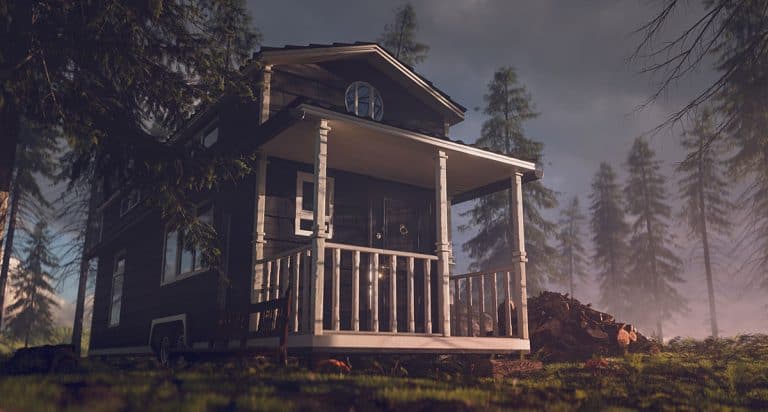


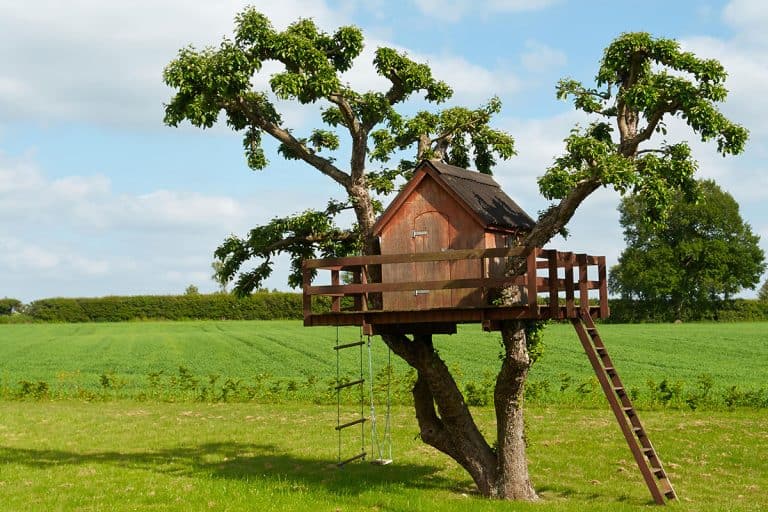
![Can You Live In A Yurt Year-Round? [4 Things To Consider!]](https://freedomresidence.com/wp-content/uploads/2022/05/Can-You-Live-in-a-Yurt-Year-Round-1-768x512.jpg)
